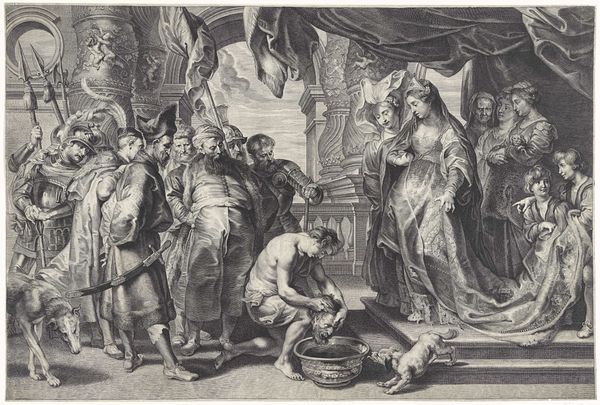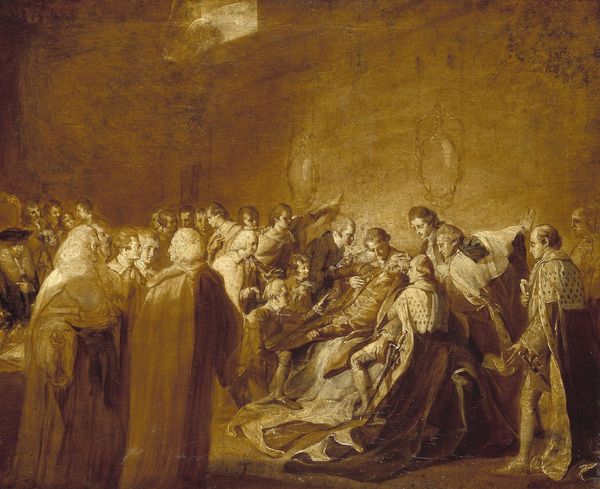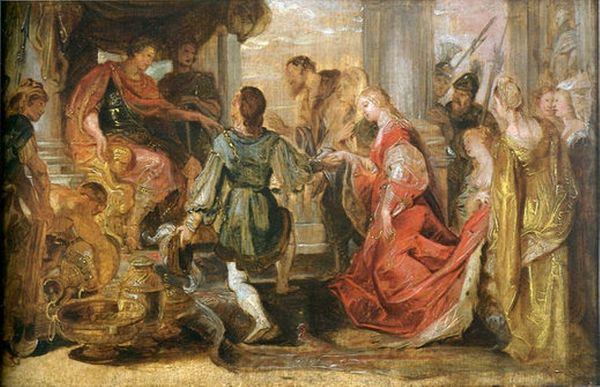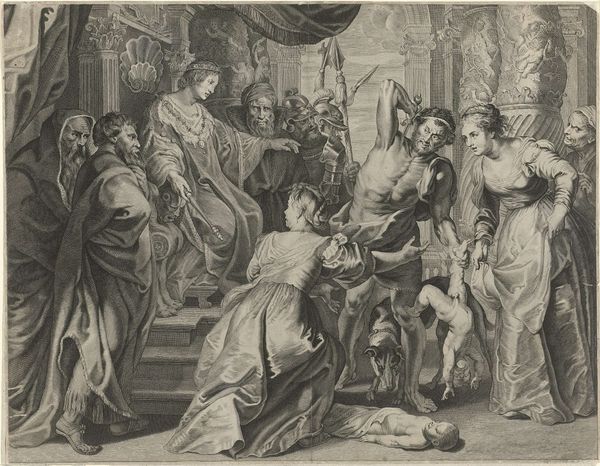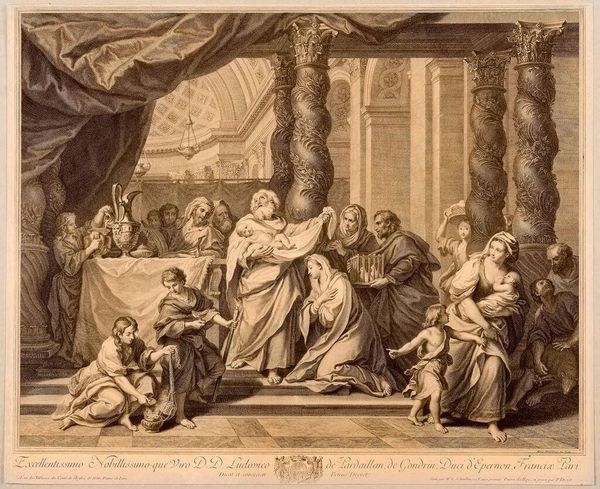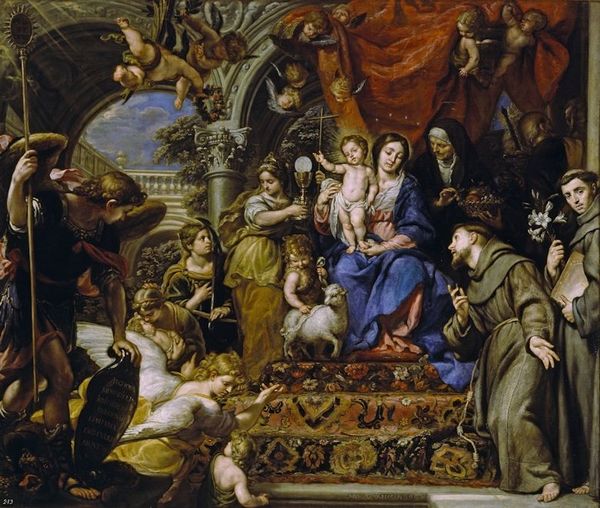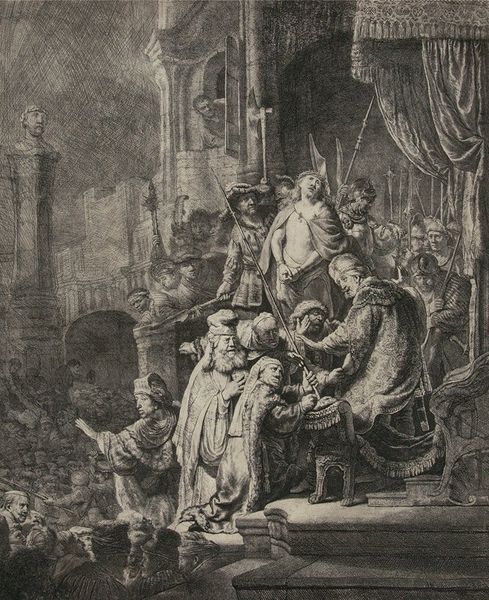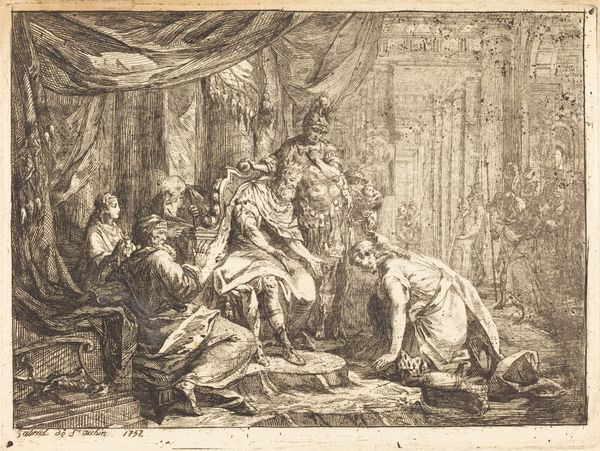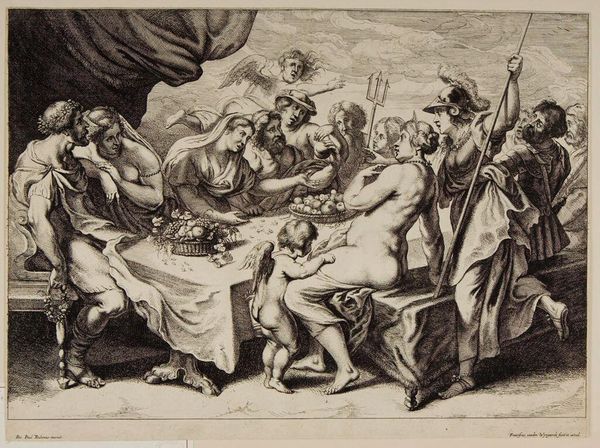
painting, oil-paint
#
portrait
#
allegory
#
baroque
#
painting
#
oil-paint
#
figuration
#
oil painting
#
group-portraits
#
mythology
#
history-painting
Dimensions: 39 x 59 cm
Copyright: Public domain
Editor: Here we have Peter Paul Rubens' "Queen Tomyris with the Head of Cyrus" from 1630, done in oil paint. It’s a rather gruesome scene! Tomyris seems surprisingly unmoved by the act happening before her. What do you make of this work? Curator: Looking at Rubens' "Queen Tomyris," I'm immediately struck by the materiality. Observe how Rubens employs oil paint. How do its textural qualities—the layering and blending—contribute to the drama unfolding? It's not just about depicting a historical event, but about the labor involved in creating the image, right? Think about the pigment sources and the societal values projected. Editor: I see what you mean. The very texture seems to emphasize the brutal reality of the scene. What can that reveal to us? Curator: Exactly. The violence is explicit, yes, but also consider the materials used to convey this scene of conquest. Where did Rubens source his pigments? Were they local or imported? And the canvas itself, the weave and preparation—all speak to specific economic and social conditions of 17th-century Antwerp. Notice the drape behind the queen, does its opulence belie the means required to realize it? Editor: That is definitely a point I had not previously considered. I’m curious now, what do the materials, in all their cost and sourcing, say about power structures? Curator: Well, it directs us to think about consumption, doesn’t it? The act of creation itself, in Rubens' workshop, involves laborers and assistants. By understanding the production of these materials, can we unpack some of the power dynamics inherent in this work, and by extension, the queen’s own exercise of power? Editor: Absolutely. It’s like the painting itself becomes a commodity, reflecting the societal forces at play in its creation and consumption. The opulence of materials almost reinforces the power dynamic depicted. I will look differently from now on! Curator: Precisely. Shifting the focus to the process unveils new layers of understanding within this complex image.
Comments
No comments
Be the first to comment and join the conversation on the ultimate creative platform.

